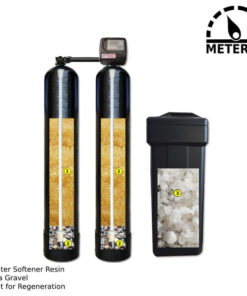Reverse Osmosis
Reverse Osmosis (RO) is a water purification process used in aquariums to produce high-quality water by removing impurities and minerals. Here’s how it works and its benefits:
How it works:
1. Water is forced through a semi-permeable membrane, allowing water molecules to pass through.
2. Impurities and minerals are rejected by the membrane, remaining in the waste stream.
3. The purified water is collected and used in the aquarium.
Benefits:
1. Removes impurities: Takes out chlorine, chloramines, heavy metals, and other contaminants.
2. Reduces Total Dissolved Solids (TDS): Removes minerals and salts, creating a balanced water environment.
3. Improves water quality: Enhances water clarity, stability, and overall quality.
4. Prevents algae growth: Reduces nutrients that contribute to algae growth.
5. Promotes healthy fish: Provides a clean and stable environment for aquatic life.
Types of RO systems:
1. Single-stage RO: Basic system with one membrane.
2. Multi-stage RO: Advanced system with multiple membranes for increased efficiency.
3. RO/DI systems: Combines RO with Deionization (DI) for ultra-pure water.
Important considerations:
1. Regular maintenance: Replace membranes and clean the system regularly.
2. Water rejection rate: Be aware of the waste water generated by the RO process.
3. Remineralization: Consider adding back beneficial minerals removed by the RO process.
By using Reverse Osmosis, you can create a pristine water environment for your aquarium, supporting the health and well-being of your aquatic friends!




